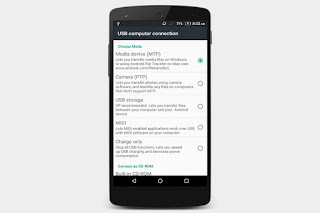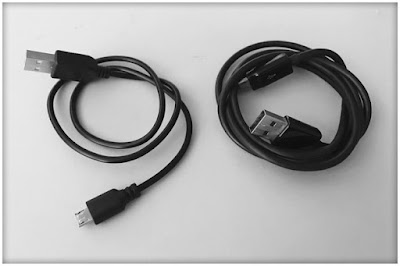Data disaster averted! How to back up your Android smartphone
Oh no! You dropped your phone in the street. Then it was run over. Twice. And then you were almost hit by a Subaru trying to rescue it from the middle of the crosswalk.
If this sad story sounds familiar — or at least plausible — chances are the first thought racing through your head, as an onslaught cars race over your phone, is of all the contacts, photos, text messages, and notes stored on your device. What’s an Android aficionado to do in a case like this? Like your mother once said, “Plan ahead.”
Planning ahead is the easiest way to make sure your data isn’t lost to the ether, even if your phone is destroyed. Luckily, Google automatically syncs your contacts, calendar appointments, docs, and even app purchases — as long as you give it permission to do so. While Google will preserve a lot of your data, there are other methods and backup programs that will allow you to save the same data. Read on to find out how to back up your Android phone’s content to your PC.
Stick with Google
Giving Google permission to back up your stuff will vary slightly from phone to phone. In general, you’ll want to go to Settings > Backup & reset then tap Backup my data and Automatic restore. That will cover the following:
- Google Calendar settings
- Wi-Fi networks & passwords
- Home screen wallpapers
- Gmail settings
- Apps installed through Google Play (backed up on the Play Store app)
- Display settings (Brightness & Sleep)
- Language & Input settings
- Date & Time
- Third-party app settings & data (varies by app)
But that’s not the only backup trick Google has up its sleeve. If you use Google’s Music service, all of your tunes will be preserved on Google’s servers, even if both your phone and your computer die at the same time. If you have a large music collection, like we do, the initial upload process will take a long time — we’re talking days. But once the first upload is done, subsequent albums will upload as they are added to your collection. Your music can then be streamed on up to ten Android devices or to other computers.
Drag and drop content directly from your device

Photos, videos, and music from your Android phone may also be transferred directly to your PC or Mac by plugging your phone into your computer and manually copying the files over to your hard drive. It’s not a perfect solution, but it’s quick and easy, especially on a PC where Windows will mount it as an external drive and use Media Transfer Protocol.
WHAT IF WINDOWS DOESN’T DETECT MY SMARTPHONE?
 Do you have the correct USB cable? Many users often try to connect their smartphones to their computers with any MicroUSB cable they have lying around, but this may be the reason why your smartphone isn’t showing up in Windows. In the picture above, for example, the third-party cable on the left is only able to charge an Android smartphone. The official LG MicroUSB cable on the right, however, is able to get the USB connection notification to appear in the notification area
Do you have the correct USB cable? Many users often try to connect their smartphones to their computers with any MicroUSB cable they have lying around, but this may be the reason why your smartphone isn’t showing up in Windows. In the picture above, for example, the third-party cable on the left is only able to charge an Android smartphone. The official LG MicroUSB cable on the right, however, is able to get the USB connection notification to appear in the notification areaOnce done, your smartphone will be listed in the Windows File Explorer as one of your drives. If you’re using a Mac, download Android File Transfer, install the software, and run it upon connecting your phone. It’ll start up automatically after that.
GO WITH A THIRD-PARTY BACKUP UTILITY
If we were to design a straightforward backup system for Android, it would probably work just like My Backup Pro. Available in the Google Play Store ($5), this app backs up everything that’s possible to back up without having your phone rooted — photos, app data, browser bookmarks, contacts, system settings, home screen shortcuts, alarms, calendars, MMS messages, SMS messages, music, and more. The app allows you to schedule backups at convenient times, like when you’re sleeping, and saves the backup files either to the MicroSD card in your phone or to the cloud, making your data instantly accessible at the My Backup Pro site. If your phone dies or if you move to a new phone, use My Backup Pro’s software to restore all of your settings, data, and apps in a single session.
SMS Backup & Restore
Want to preserve every last drunken text message for posterity? SMS Backup & Restore is a free app that integrates with your email account, Google Drive, or Dropbox to back up your SMS messages in XML format. You can store backups on your computer and send them via email. It’s possible to view and restore your messages selectively, or all at once. You can also use the app to schedule regular backups.Use your device manufacturer’s software
Near enough every smartphone manufacturer out there offers some kind of backup solution for your device. Most of them are shifting away from computer-based backups to easy switching apps that let you port across your contacts, photos, messages, and the rest. Here’s a list of some of the options:
If you have rooted your Android device, then you should have a look at Titanium Backup. It’s a powerful backup tool that’s packed with power-user features.
Back that phone up!
As G.I. Joe would saying, “Knowing is half the battle.” The other half of the battle is backing up your data in case your phone accidentally meets the wheels of a truck. Google is definitely an ally in the backup battle, but you’ll want to enlist the assistance of the apps above to ensure all of your photos, notes, and messages are protected.



Comments
Post a Comment